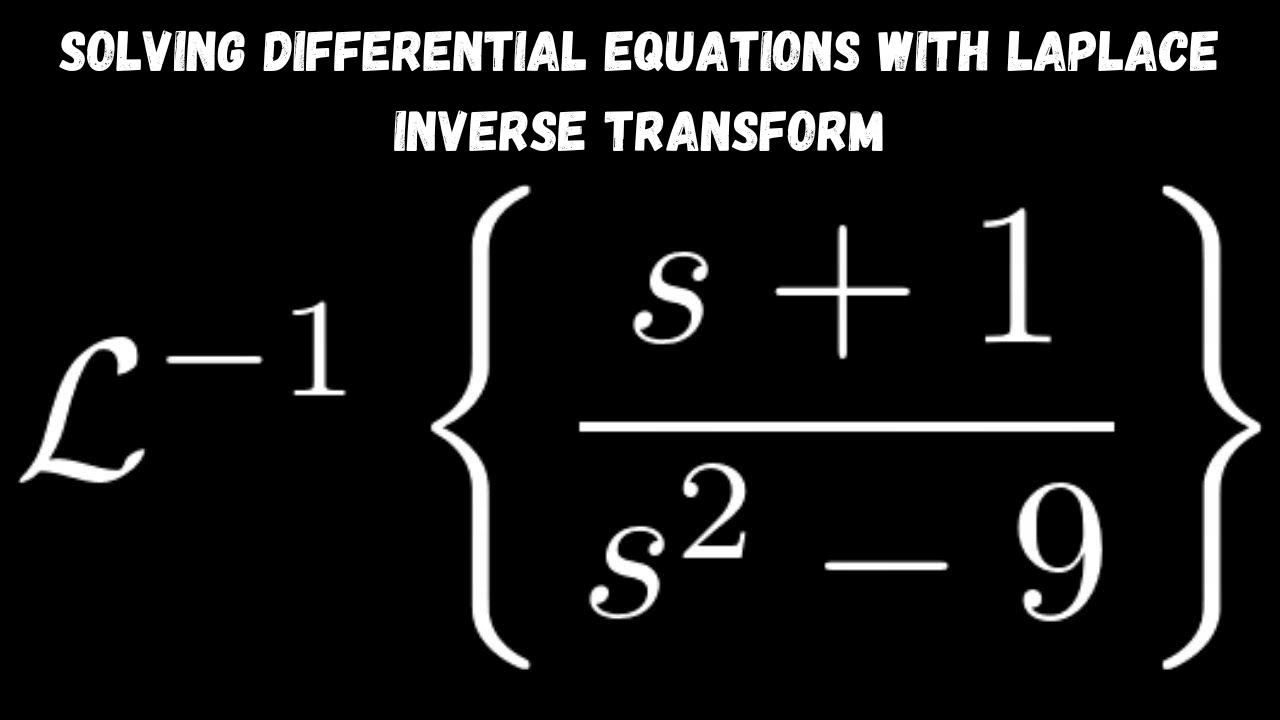
Differential equations are mathematical equations that involve derivatives and are widely used to model various phenomena in science and engineering. Solving these equations is essential to gain insights into complex systems. In this article, we will explore how to solve differential equations using the Laplace Inverse Transform, a powerful tool in the field of mathematics.
Introduction
Differential equations play a crucial role in many scientific disciplines, including physics, engineering, economics, and biology. They describe the relationships between a function and its derivatives, capturing the dynamic behavior of various systems.
Understanding Differential Equations
What are Differential Equations?
Differential equations are mathematical equations that involve one or more derivatives of an unknown function. They are represented in the form of “dy/dx” or “d^2y/dx^2,” where “y” is the unknown function, and “x” represents the independent variable.
Types of Differential Equations
There are several types of differential equations, including ordinary differential equations (ODEs) and partial differential equations (PDEs). ODEs involve only one independent variable, while PDEs involve multiple independent variables.
Importance of Solving Differential Equations
Solving differential equations helps us understand the behavior and evolution of various systems. They are used to model a wide range of phenomena, such as population dynamics, heat transfer, electrical circuits, and mechanical systems.
Laplace Transform: A Powerful Tool
Introducing Laplace Transform
The Laplace Transform is a mathematical technique used to simplify the solving of linear differential equations. It transforms a time-domain function into a complex frequency-domain function, making it easier to manipulate and analyze. The formula for the Laplace Transform is:
F(s) = ∫∞0 f(t) . e-st dt
Advantages of Using Laplace Transform
The Laplace Transform offers several advantages, such as converting differential equations into algebraic equations, handling initial value problems efficiently, and providing stability analysis for control systems.
Laplace Inverse Transform: The Reverse Process
Defining Laplace Inverse Transform
The Laplace Inverse Transform, also known as the inverse Laplace Transform, is the reverse process of the Laplace Transform. It converts the frequency-domain function back to the time-domain function.
Solving Differential Equations with Laplace Inverse Transform
To effectively solve differential equations using the Laplace Inverse Transform, we rely on a handy tool known as the inverse Laplace transform calculator. This nifty tool allows us to effortlessly transform the given equation into the frequency domain using the Laplace Transform. Once we’ve made the transformation, we proceed with some algebraic manipulations in the frequency domain. And here comes the real magic: we apply the inverse Laplace transform using the calculator to elegantly obtain the solution in the time domain. With this seamless process, navigating through complex equations becomes remarkably efficient, and we can focus on gaining deeper insights into the underlying dynamics.
Case Study 1: First-Order Ordinary Differential Equation
Problem Statement
Consider a first-order ordinary differential equation describing the exponential decay of a radioactive substance.
dy/dt + 3y = 0
y(0) = 10
Applying Laplace Inverse Transform
Using the Laplace Transform, we obtain the transformed equation in the frequency domain:
Y(s) = 10 / (s + 3)
Step-by-Step Solution
Applying the Laplace Inverse Transform to the frequency-domain equation, we obtain the solution in the time domain:
y(t) = 10 * e^(-3t)
Case Study 2: Second-Order Ordinary Differential Equation
Problem Statement
Consider a second-order ordinary differential equation representing the simple harmonic motion of a mass-spring system.
d^2y/dt^2 + 4dy/dt + 4y = 0
y(0) = 2
dy/dt(0) = 0
Applying Laplace Inverse Transform
Using the Laplace Transform, we obtain the transformed equation in the frequency domain:
Y(s) = 2 / (s^2 + 4s + 4)
Step-by-Step Solution
Applying the Laplace Inverse Transform to the frequency-domain equation, we obtain the solution in the time domain:
y(t) = 2 * e^(-2t) * (cos(2t) + sin(2t))
Case Study 3: Partial Differential Equation
Problem Statement
Consider a partial differential equation representing heat conduction in a one-dimensional rod.
∂u/∂t – k ∂^2u/∂x^2 = 0
u(x, 0) = f(x)
Applying Laplace Inverse Transform
Using the Laplace Transform, we obtain the transformed equation in the frequency domain:
U(x, s) = F(x) / (s + k * s^2)
Step-by-Step Solution
Applying the Inverse Laplace Transform to the frequency-domain equation, we obtain the solution in the time domain:
u(x, t) = L^-1{F(x) / (s + k * s^2)}
Real-World Applications of Laplace Inverse Transform
Engineering
The Inverse Laplace Transform finds applications in various engineering fields, such as electrical circuits, control systems, and mechanical vibrations.
Physics
In physics, the Laplace Inverse Transform is used to solve problems related to heat conduction, wave propagation, and quantum mechanics.
Electronics
Electronics engineers utilize the Laplace Inverse Transform for analyzing and designing filters, amplifiers, and communication systems.
Advancements and Limitations
Advanced Techniques and Tools
Researchers have developed advanced techniques and computational tools to handle more complex differential equations efficiently.
Limitations of Laplace Inverse Transform
Although the Inverse Laplace Transform is powerful, it may not always provide analytical solutions for highly intricate differential equations.
Related: The Power of Math Assignment Help: Navigating the Complexities with Confidence
Conclusion
In conclusion, the Laplace Inverse Transform is a valuable tool for solving differential equations and gaining insights into complex systems. It has widespread applications in various scientific and engineering domains, enabling us to understand real-world phenomena better.